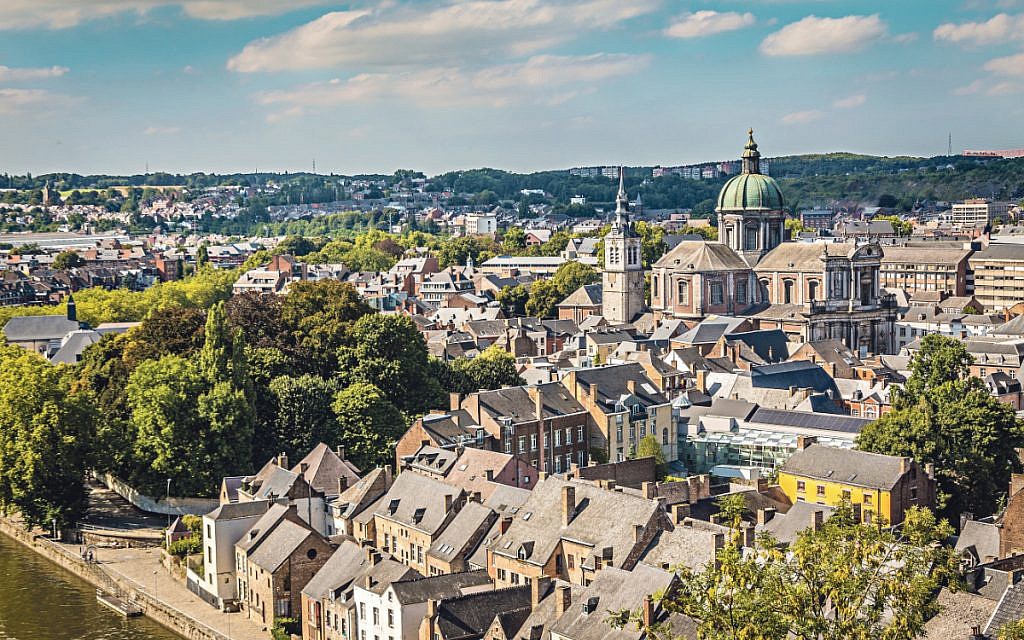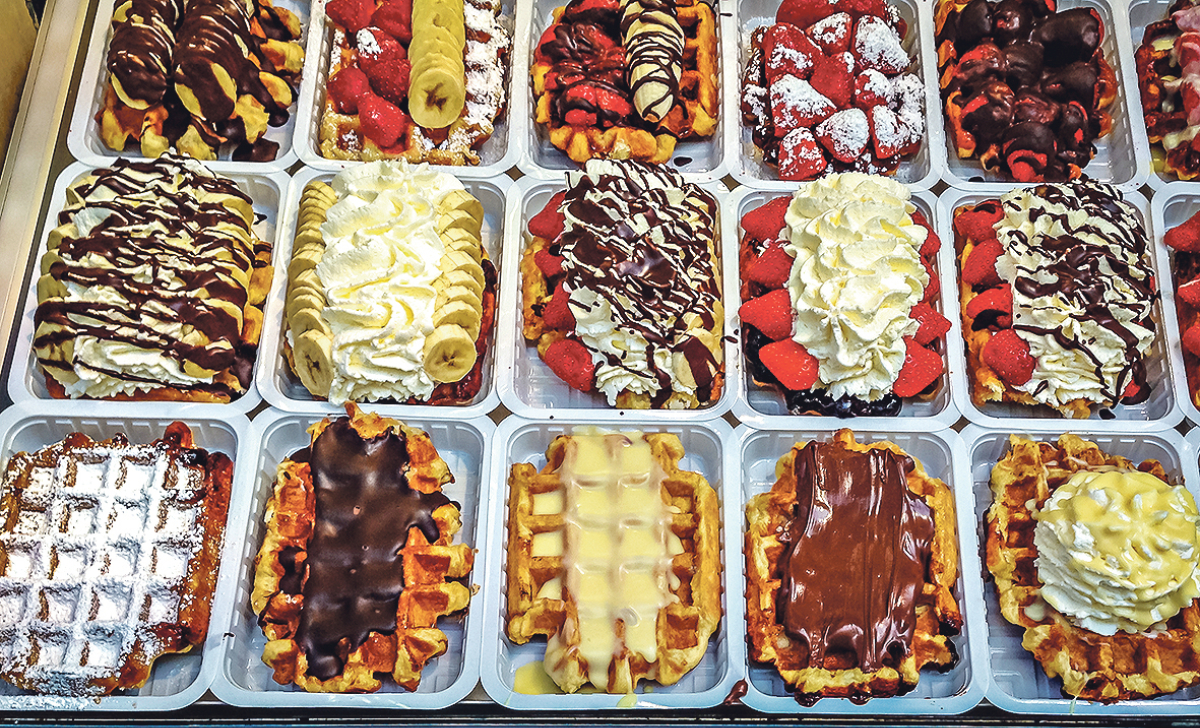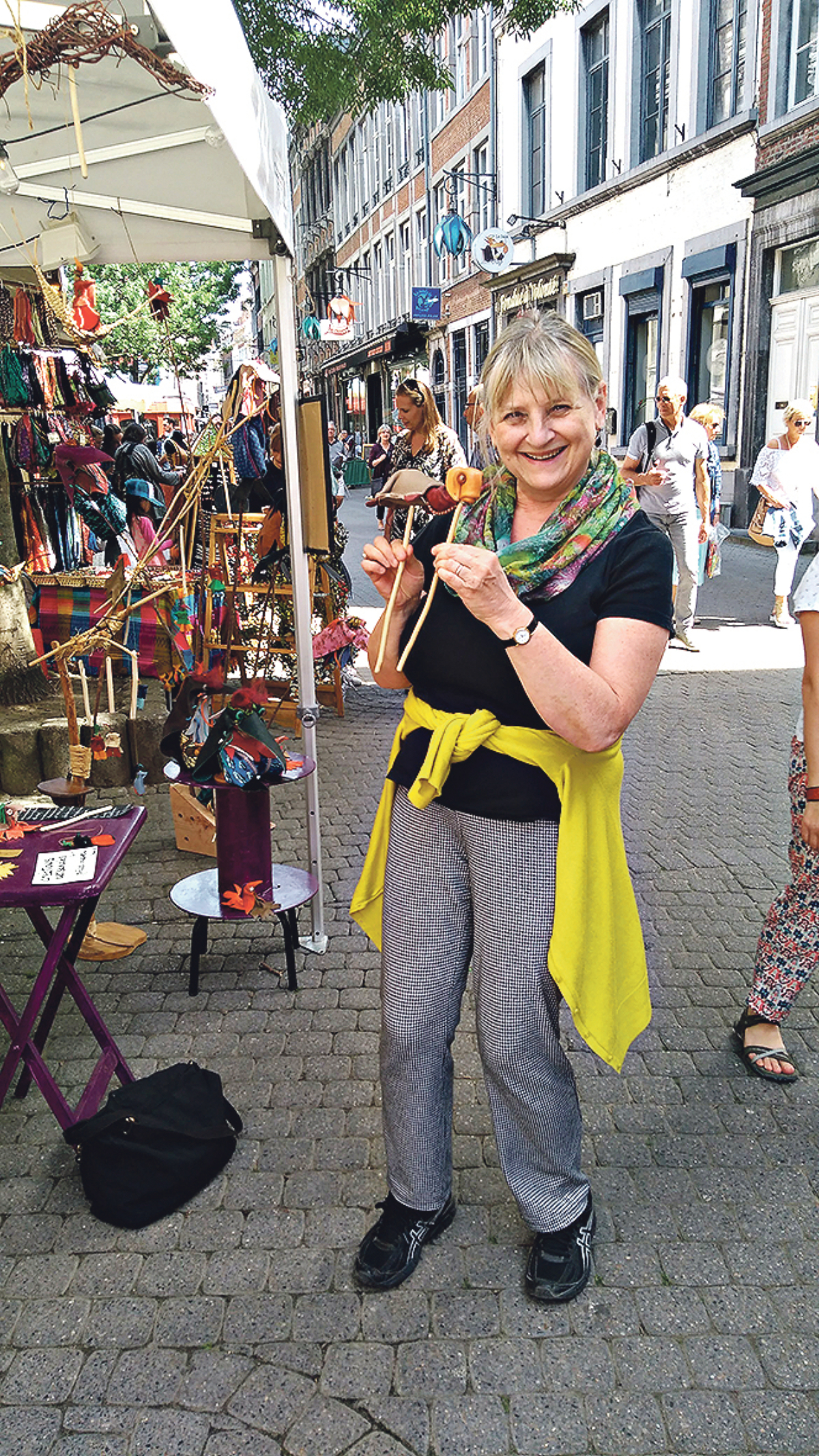All Belge and waffles!
Lucy Daltroff explores the vibrant Belgian region of Wallonia, discovers a medieval spa town and samples famous Liège waffles
From roller-skating accordion players to poetic contortionists, a camel, and puppets carefully crafted from pieces of leather, the streets are alive in Namur.
This is the capital of Wallonia, the French speaking and largest part of Belgium – and I am amazed it is not better known as a tourist destination.
Admittedly, I am here for an annual street art festival bringing colour to this historic and vibrant city.
Get The Jewish News Daily Edition by email and never miss our top stories Free Sign Up
As lunchtime approaches, I spot characterful restaurants with large outside courtyards, full of tables where animated conversations and excellent food are on offer, before venturing along the narrow pedestrianised streets filled with enticing cake and chocolate shops at every turn.
Yet it is not chocolate, but the citadel that is the city’s most prominent asset – once one of Europe’s mightiest fortresses.
It is now demilitarised and open to the public with beautiful views looking over the hills and forests of the Ardennes.
Namur stands at the confluence of the Sambre and Meuse rivers and its mascot is a snail, as the inhabitants pride themselves in being laid back and unhurried.
That’s not the case at the moment, with crowds now dancing and jostling in the street as they listen to a particularly popular jazz band.
One of the musicians is playing the saxophone, an appropriate choice given that just 30 minutes away is the city of Dinant, birthplace of the Jewish musician and innovator Adolphe Sax, who in 1840 invented this iconic instrument.
One of Wallonia’s most famous tourist attractions is the town of Spa, a watering place since the 14th century, from where the word “spa” originates – synonymous with any place having a natural water source believed to possess special health properties.
A visit here would not be complete without trying the famous product – but, truthfully, it tastes so strongly of minerals, the water is quite hard to swallow.
The town, however, is easier to appreciate, with its own funicular railway from the centre to a nearby hotel and spa complex situated up a steep hill. Nearby, too, is the famous Circuit de Spa-Francorchamps, which hosts the annual Belgian Grand Prix.
Wealthy tourists sampling the local product have naturally always needed their laundry done. The pure spring water made the clothes so soft that even after returning home, clients still sent their washing back to be done in Spa. Today, this has resulted in Europe’s only laundry museum – a small but fascinating place manned by volunteers.
It shows that in ancient times rivers were used and human urine was a good way to get the suint out of wool. Launderers also found that the leaves of the Saponaria plant, when soaked in water, produced a sort of soap.
In the Middle Ages, clothes were washed twice a year, in spring and autumn, using wood ash and then laid out in meadows where the sun would act as a bleach.
It wasn’t until the 19th century that the first, basic washing machines were invented as a result of a cholera outbreak, when the importance of cleanliness became more apparent.
During the First World War, the large copper machines were often painted grey to disguise the fact that a valuable metal was being used and to save them from being requisitioned.
After leaving this informative little gem of a place, I journeyed onwards to Liège, a city that has been prominent since the Middle Ages, but really blossomed during the industrial revolution.
Although it is Belgium’s third city, after Brussels and Antwerp, it also seems to be inexplicably right off the tourist track. The main shopping centre, Médiacité, was designed by the Israeli architect Ron Arad.
There was also once a small Jewish community here dating from the 19th century and, prior to the Nazi invasion of Belgium, there were around 2,000 Jews living here.
Around 600 people were deported to death camps between 1942 and 1944 and post-war, many families made aliyah. Today, only about 200 families remain in the city.
My visit to Liège coincided with the biannual Métamorphoses Festival and I went straight off to meet Thierry, who was to give me a sonic
massage.
This involved lying supine and blindfolded on a table, wearing headphones and having various types of sounds played, both on top and under me. I was not quite convinced by the benefits of it – but it was an interesting experience to do once!
The festival also consists of acrobatics, family yoga sessions and music, much of it being held in the attractive Boverie Park, which also houses a significant museum of art.
Chips, beer and chocolate are perhaps what Belgium is known for overall, but that was before I sampled the Liège waffle. No other waffle can really compare. It needs no topping as it’s so very tasty on its own: small rich and intense; crunchy within from embedded pearls of sugar, yet firm on the outside.
This waffle alone is enough to entice me back to beautiful Wallonia.
Lucy’s travel tips
Namur can be reached by Eurostar, from London St Pancras to Calais or Brussels and transfer onto local train (eurostar.com/uk-en/train/Belgium). For more information about Wallonia, visit walloniabelgiumtourism.co.uk

Thank you for helping to make Jewish News the leading source of news and opinion for the UK Jewish community. Today we're asking for your invaluable help to continue putting our community first in everything we do.
For as little as £5 a month you can help sustain the vital work we do in celebrating and standing up for Jewish life in Britain.
Jewish News holds our community together and keeps us connected. Like a synagogue, it’s where people turn to feel part of something bigger. It also proudly shows the rest of Britain the vibrancy and rich culture of modern Jewish life.
You can make a quick and easy one-off or monthly contribution of £5, £10, £20 or any other sum you’re comfortable with.
100% of your donation will help us continue celebrating our community, in all its dynamic diversity...
Engaging
Being a community platform means so much more than producing a newspaper and website. One of our proudest roles is media partnering with our invaluable charities to amplify the outstanding work they do to help us all.
Celebrating
There’s no shortage of oys in the world but Jewish News takes every opportunity to celebrate the joys too, through projects like Night of Heroes, 40 Under 40 and other compelling countdowns that make the community kvell with pride.
Pioneering
In the first collaboration between media outlets from different faiths, Jewish News worked with British Muslim TV and Church Times to produce a list of young activists leading the way on interfaith understanding.
Campaigning
Royal Mail issued a stamp honouring Holocaust hero Sir Nicholas Winton after a Jewish News campaign attracted more than 100,000 backers. Jewish Newsalso produces special editions of the paper highlighting pressing issues including mental health and Holocaust remembrance.
Easy access
In an age when news is readily accessible, Jewish News provides high-quality content free online and offline, removing any financial barriers to connecting people.
Voice of our community to wider society
The Jewish News team regularly appears on TV, radio and on the pages of the national press to comment on stories about the Jewish community. Easy access to the paper on the streets of London also means Jewish News provides an invaluable window into the community for the country at large.
We hope you agree all this is worth preserving.
-
By Brigit Grant
-
By Laurent Vaughan - Senior Associate (Bishop & Sewell Solicitors)
-
By Laurent Vaughan - Senior Associate (Bishop & Sewell Solicitors)
-
By Laurent Vaughan - Senior Associate (Bishop & Sewell Solicitors)
-
By Laurent Vaughan - Senior Associate (Bishop & Sewell Solicitors)
























